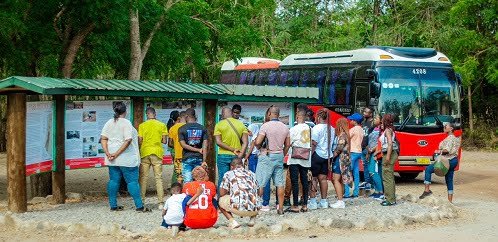[ad_1]
The number of tourists who visited the Shai Hills Resource Reserve at Doryumu in the Shai Osudoku District of the Greater Accra Region, shot up by more than 100 per cent last year, resulting in revenue of about a million cedis.
Within the period, the reserve received a total of 50,260 tourists made up of 45,590 Ghanaians and 4,670 non-Ghanaians as compared to 21,149 visitors in 2021 comprising 18,471 locals and 2,678 foreigners.
The Park Manager, Prince Anane Agyei, who disclosed this to The Ghanaian Times said the site exceeded its 2022 target of 35,000 tourists by over 40 per cent, with the revenue ranging “between GH¢800,000 to over GH¢1 million”.
In an interview on Wednesday, he attributed the gains to strategies introduced by management, including a focus on domestic tourism due to lessons learned from the
slash in foreign tourists during the peak of the COVID-19 pandemic.
“Before the pandemic, most of our adverts and concentration of marketing was on the non-Ghanaians, but when COVID-19 came, we learned lessons from it that we should rather concentrate on Ghanaians.
“So we channelled most of our marketing efforts to Ghanaians and that has accounted for the numbers we have now. It is more sustainable. Ghanaians are beginning to like our products more than foreigners,” he said.
Mr Agyei said there was also a conscious marketing of the reserve especially on digital platforms as well as improvement of customer service delivery through staff re-orientation and capacity building.
He said the feat achieved by the site was despite an increase in rates in November last year due to the economic situation in the country and the pursuit of quality service.
He said the last time rates were increased was in 2017, and, currently, tourists were charged between GH¢2 and GH¢10 extra across all the categories of activity they chose.
A Ghanaian adult tourist was now required to pay, GH¢29 for the first hour spent at the site and GH¢6 for an additional hour while foreigners paid double.
Mr Agyei said the rates were worth it because tourists had an opportunity to see various animals including zebras, ostriches at the animal farm, and antelopes, baboons, and others in their natural homes.
He said there was also a Museum of National Heritage which contained artifacts of wildlife species and archeological and cultural materials of the Shai people and tourists could go hiking, visit historic caves, and also lodge at the reserve.
On safety measures, he said, tourists were guided by trained and armed tour guides who in addition to narrating history about the place protected them from harm.
He said the reserve had plans to build more accommodation facilities for night tourism, introduce safari cars, and all-terrain vehicles, and open new hiking trails and children’s playing ground.
On challenges, Mr Agyei said the reserve needed assistance to fix its tour roads to enable all year-round tours because the feeder roads therein were difficult to use during the peak of the rainy season.
Declared a forest reserve in the 1960s, the park, is a protected area of more than 5,000 hectares of land, and is home to numeral animals. It was also home to the Shai People until they were ejected by the British government in the 1890s.
BY JONATHAN DONKOR
[ad_2]
Source link



